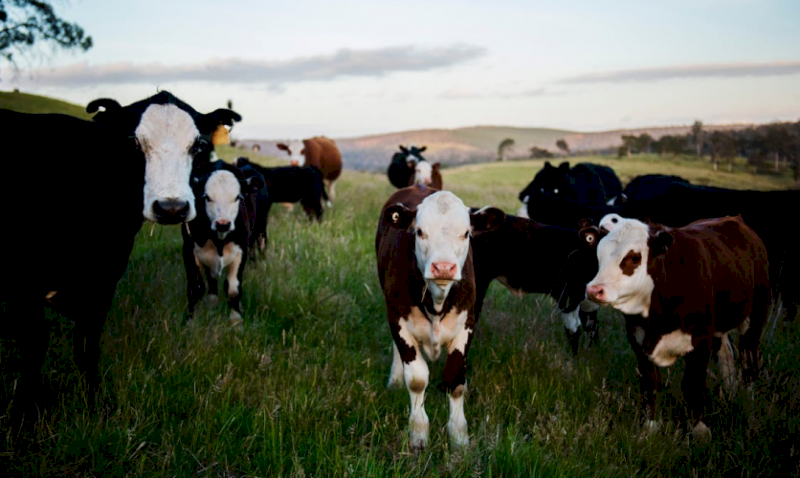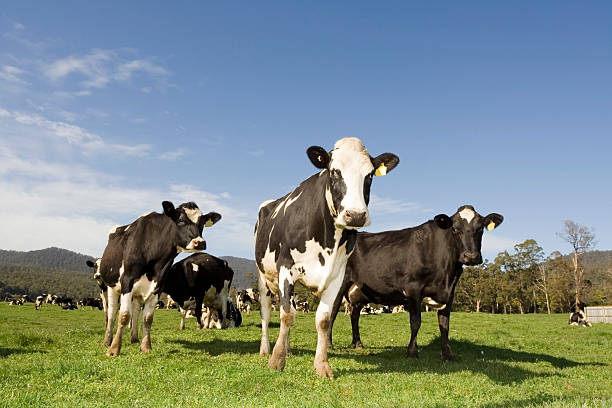Discover the Advantages of Yard Fed Meat for Healthy Cooking
A closer examination of the advantages linked with incorporating grass-fed meat into your cooking repertoire discloses a globe of advantages that not only effect the final recipe's taste but additionally contribute to a much healthier way of life. These advantages cover from exceptional dietary profiles to sustainable production techniques, making grass-fed meat an engaging option for those looking to make informed choices regarding their food usage.

Superior Nutritional Profile
Grass-fed meat uses an exceptional dietary account contrasted to conventionally raised alternatives because of its higher degrees of vital nutrients and much healthier fat make-up. This distinction originates from the natural diet regimen of grass-fed pets, that includes a variety of yards, beans, and natural herbs. Constance Cattle. As an outcome, the meat acquired from these animals has a tendency to be richer in vital nutrients such as omega-3 fatty acids, anti-oxidants like vitamin E, and conjugated linoleic acid (CLA), a beneficial fat recognized for its possible health-promoting residential properties
Omega-3 fats play a crucial role in mind feature, heart health and wellness, and swelling reduction. Grass-fed meat is a notable resource of these important fats, using a much more positive omega-3 to omega-6 ratio contrasted to grain-fed equivalents. Furthermore, the higher levels of vitamin E discovered in grass-fed meat function as powerful anti-oxidants that assist secure cells from damage created by free radicals.
Sustainable Production Approaches
Offered the noteworthy advantages in regards to dietary high quality related to grass-fed meat, it is essential to check out the lasting manufacturing approaches employed in the raising of these pets - Constance Cattle. Grass-fed meat is not only beneficial for human health and wellness however additionally for the environment when produced using lasting methods. Lasting manufacturing approaches concentrate on keeping the health of the dirt, promoting biodiversity, and minimizing environmental influence
One key aspect of sustainable manufacturing techniques for grass-fed meat is rotational grazing. This practice involves moving livestock to various fields regularly, allowing the turf to recover and promoting healthier soil. By rotating grazing locations, farmers can prevent overgrazing, reduce dirt disintegration, and enhance vitamins and mineral biking.
Rather, they might opt for regenerative and organic farming methods to maintain soil health and support a flourishing ecological community. By focusing on sustainable production approaches, consumers can support environmentally pleasant practices while taking pleasure in the lots of health benefits of grass-fed meat.
Enhanced Omega-3 Fat
The intake of grass-fed meat is associated with an increased intake of omega-3 fatty acids, which play an important role in advertising heart health and wellness and general wellness - Constance Cattle. Unlike grain-fed counterparts, grass-fed animals have greater levels of omega-3 fatty acids, particularly alpha-linolenic acid (ALA), eicosapentaenoic acid (EPA), and docosahexaenoic acid (DHA) These essential fats are known for their anti-inflammatory residential properties and are additional resources connected to a reduced risk of cardio diseases, enhanced brain function, and better mental health
Omega-3 fatty acids are considered necessary nutrients that the body can not generate on its very own, demanding their intake via dietary resources like grass-fed meat. Study has reference actually shown that a diet abundant in omega-3 fatty acids can aid lower blood stress, reduce triglyceride levels, and reduce the threat of heart assaults and strokes. By choosing grass-fed meat over traditionally raised options, individuals can improve their omega-3 consumption, contributing to a much healthier way of life and boosted well-being.
Rich in Antioxidants
Beneficial past their omega-3 fatty acid web content, grass-fed meats also stand out for being rich in antioxidants, showcasing extra health and wellness advantages for consumers seeking a well-rounded dietary profile. Grass-fed meats, contrasted to their grain-fed counterparts, include higher levels of anti-oxidants such as vitamins E and Selenium, c, and beta-carotene.

Elevates Taste and Nutritional Value

Along with remarkable preference, grass-fed meat is also recognized for its greater dietary worth. It normally contains greater levels of omega-3 fats, which are helpful for heart health, along with greater concentrations of anti-oxidants, minerals, and vitamins. These nutrients not just add to the total wellness advantages of grass-fed meat however also add deepness and splendor to the flavors of your dishes.

Conclusion
Finally, the advantages of lawn fed meat for healthy food preparation are significant. Its premium dietary profile, sustainable manufacturing techniques, boosted omega-3 fats, abundant anti-oxidants, and raised taste and nutritional worth make it a wise option for those aiming to enhance their general health and wellness and wellness. Consider including yard fed meat into your diet to appreciate these advantages and improve your cooking experience.
By focusing on lasting production methods, customers can support eco pleasant practices while delighting in the lots of health and wellness benefits of grass-fed meat.
The consumption of grass-fed meat is connected with a boosted consumption of omega-3 fatty acids, which play a crucial duty in advertising heart health and wellness and overall wellness.Omega-3 fatty acids are taken into consideration necessary nutrients that the body can not produce on its own, demanding their intake with dietary sources like grass-fed meat.Beneficial past their omega-3 fatty acid web content, grass-fed meats likewise stand out for being abundant in antioxidants, showcasing additional wellness benefits for customers looking for a well-shaped dietary account. Grass-fed meat often tends to have a richer, much more all-natural flavor compared to traditionally raised meat.
Comments on “Constance Cattle Chronicles: Stories from Breeders and Farmers on Their Successes and Difficulties”